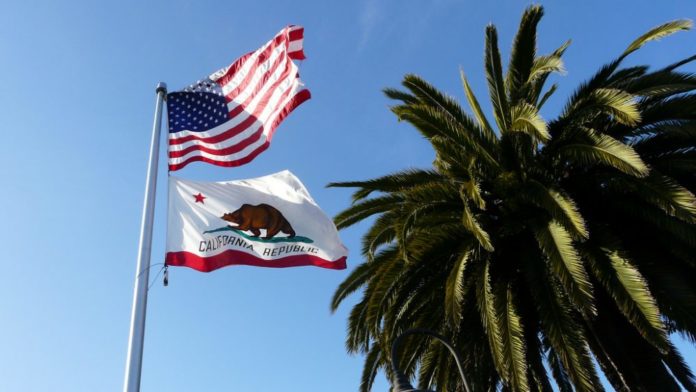Since the tragic attacks on the Twin Towers on September 11, 2001, domestic acts of terrorism by foreign nationals, or on behalf of foreign terrorist organizations, have been relatively small in terms of casualties. That is unless you lost a loved one to the radical Islamist movement.
If history is prolog, the new president will be tested by “saber rattling” foreign powers, including terrorists, and typically sooner rather than later. It is all about re-evaluating their calculus with a new suit in the White House.
Meanwhile, angry Democrats in their soiled electoral diapers are doing everything they can to encumber a functional Trump government, including obstructing sound national security policy related to terrorism. That our politicians are so naive about the reality of terrorists being embedded in refugee groups strains credibility. The threat is real, and they know it.
Their actions are baffling if not ludicrous. Is it lost on the national press and public that the Democratic Party’s vetting of Trump’s cabinet is more stringent than vetting on alleged foreign refugees from a terrorist zone? When the domestic terrorism again raises its ugly head, as it most certainly will, Democrats will be the first to attribute it to Trump immigration policy.
In the meantime, Democratic Party financiers fund, exacerbate and encourage domestic turmoil inspired by race baiting, identity politics, and advancing the cause of Marxism. We are witnessing a feeding frenzy among disaffected and immature young people in search of a reason to act out their anger and ignorance. All of this domestic turmoil comes at a time China and Russia are posturing and flexing their military might. These are dangerous times and miscalculations can bring tragic consequences.
Despite Our Might, Weakness Emboldens Enemies
Bill Clinton’s weakness in the face of radical Islam eventually emboldened al-Qaeda to undertake the hideously inhumane event of 9/11. In 1993, the World Trade Center was attacked by radical Islamist Ramzi Yousef employing a 1,300-pound truck bomb in the parking structure. Miraculously, only six people died, although more than a thousand were injured. Clinton feigned outrage and promised the guilty would be brought to justice.
In1996, the Khobar Towers barracks were bombed in Saudi Arabia. The result was 19 dead soldiers and hundreds injured. In 1998, our embassies in Kenya and Tanzania were bombed and, two months later, the USS Cole was bombed. Each attack was followed by a serious-sounding Clinton pledging the attackers would be brought to justice.
In fact, he did little or nothing beyond posturing and authorizing the midnight launch of cruise missiles into an empty pharmaceutical factory in Sudan. Well, he actually did do something. He directed his aide, Dick Morris, to conduct polls on how best to respond to terrorism.
George W. Bush responded to 9/11 with an overwhelming military force that drove al-Qaeda into the mountains of Afghanistan and ultimately to a sanctuary in the northern territories of a supposed ally, Pakistan. Once in Pakistan, our resolve to seek and destroy al-Qaeda leadership withered. Rather than risk strained relations with Pakistan by pursuing Osama bin Laden with our military, we turned to a “denial of sanctuary” strategy in Afghanistan. The CIA and other intelligence arms continued the search for Bin Laden.
Next, the Bush administration became fully invested in the mythical belief that by nation-building we could reverse centuries of tribal mores, including a warrior mentality, and bring the ancient society into the modern world. By golly, with some new values, education, and a democratic form of government, the third world could become like us. We all know how nation-building turned out in both Afghanistan and Iraq after first invading their countries.
Next came the Obama administration with a pledge to get us out of Iraq, leaving a vacuum of leadership and spurring civil war and eventually the Islamic State from what remained of al-Qaeda in Iraq. Emboldened by Obama’s weakness, ISIS metastasized from a localized terror group in 2011 to proclaim a new caliphate. By 2016, it was an international terrorist organization in 18 countries. Its reach, through small cells and so-called lone wolves, has reached into Germany, France, Belgium, and the United States. According to the National Consortium for the Study of Terrorism, ISIS was responsible for over 33,000 deaths through 2015. Clearly, that number has grown.
In 2014, President Obama referred to the group as inconsequential, a “junior varsity” terror group. However, history has demonstrated that the JV team was actually the Obama administration. Again, weakness breeds boldness in terrorists, and we have been demonstrably weak in our responses for decades.
America’s Five Deadly Shortcomings Terrorists Exploit
“If you know the enemy and know yourself, you need not fear the result of a hundred battles,” said Sun Tzu, the ancient Chinese warrior. As it turns out, the Islamists have known our frailties far better than we have. They rightly concluded, and have demonstrated, that Americans have five deadly shortcomings, and they exploit them:
- We are adverse to casualties, so be bold and inhumane.
- We lack the stamina for a protracted conflict, we quit when quick victory eludes us, so make it long, painful, and tiring.
- We steadfastly cling to “we all want the same thing,” when they despise us and tell the world we are “the great Satan,” and “death to America.” Iran was doing it before the ink was dry on the nuclear treaty fiasco.
- Despite Islamists’ declaration of war with the West, we ignore them and act like we are dealing with a few malcontents bent on violence.
- They actively pursue civilization jihad in America by claiming to be “just another religion” and we ignore the irrefutable fact that they are a theocracy.
Fifteen-plus years after 9/11, we continue to “dither about” in the absence of a comprehensive, lasting, and effective strategic terrorism policy. The resilience of the Taliban and emergence of ISIS is clear evidence of failed policy.
The Nexus Between Terrorism and Civil Disorder
On the home front, we have seen civil unrest, lawless looting, and destruction of innocent people’s properties by malcontents acting out in the spotlight of televised anarchy. We are led to believe these occurrences are spontaneous events brought about largely by a racist and phobic society. We are allegedly getting what we deserve. In fact, these demonstrations are increasingly being fueled, organized, and funded to advance the “progressive” agenda espoused by Democrats and their allied media.
True, there is an undercurrent of anger in America, as in most societies. However, the gutter politics of the Democrats have intentionally stoked the fires of hatred while putting blame on Christians, Jews, and others who hold to traditional moral values.
These political arsonists are lighting fires of hatred, fear, and violence with little regard for public safety, and condoning their actions as justified—in effect, breeding insurrectionists ripe for recruitment by terrorists. Jails, prisons, gangs, and militant groups are ideal recruiting opportunities for radical Islamists. When the seeds of anarchy being deliberately sown reach the tipping point, authorities will respond in ways that will exacerbate tension points.
Peaceful demonstrations to voice disagreement with government policy are as American as our flag. We have the right to gather and voice our opinions in public, albeit with consideration of laws and not to the detriment of innocents. The voice of reason is silenced when passions ignite the mob mentality. Since when are looting, physical assault, and destruction of others’ property a given right of society? When discontent turns to mindless and lawless rage, it becomes domestic terrorism. It cannot be tolerated by a civilized society.
Trump made two cabinet appointments that will prove to be exceptionally astute: James Mattis as secretary of Defense and John Kelly as director of Homeland Security. Both of these positions have historically been staffed by civilians with mixed results. We are facing a new conflict paradigm career politicians, military, and the law enforcement public is not accustomed to dealing with. The lines of responsibility are blurred like never before.

Facing warfare by determined traditional enemies like nation states (Russia, China, etc.) is pretty well understood after centuries of conflict. The advent of terrorism changed the battlefield landscape. Loosely networked terrorist organizations like al-Qaeda and others who practice asymmetric warfare demanded new skill sets and strategies. Unfortunately, our response policy to such mixed threats has been wanting.
Is it a military or domestic insurrectionist policy that will drive strategy? Both. These two generals grasp the implications of both threats in a way that civilians do not. They share a common experience with both forms of antagonists as well as shared doctrine experiences that bode well for an integrated and effective response.
With the triad of Attorney General Jeff Sessions and these two former Marines, marshaling military and domestic resources has a much greater chance of being effective without treading on one another’s turf. The terrorism of 9/11 blurred the lines between war and law enforcement and exposed numerous cultural disconnects between law enforcement agencies themselves.
Mattis and Kelly are well suited to harnessing all of our security resources into a larger and better-integrated terrorism strategy that balances resources while leveraging strengths and bolstering our weaknesses.
The Citizen’s Role in an Age of Anarchy and Terrorism
There is little the average citizen can do for personal safety beyond recognizing the threat environment and staying clear of demonstrations. The anarchy will escalate until authorities enforce limits and the response becomes a further justification for the miscreants. You can rest assured that domestic terrorists will infiltrate the mobs and take the violence to new heights.
If domestic terrorism metastasizes, it is prudent to be aware of some common-sense guidelines I learned from Israeli terrorism officials and others:
- Have enough food, fuel, water, and medications on hand for 7-10 days.
- Have hand-held radios to communicate with family in case you get separated. In a significant national emergency, normal cell phone traffic will likely be disabled to facilitate emergency communications by authorities
- Train yourself to be more alert about people and vehicles in your immediate area.
- Learn to scan your area for objects out of the ordinary or people whose dress is unusual for the climate (a coat on a hot day—suicide bombers rarely wear their bomb vests outside).
- Train yourself and your children not to approach abandoned packages, travel baggage, or anything else that is out of the ordinary. (Palestinians have planted bombs on bus benches, in toys, musical instruments and candy and food.)
- Report people who make threats of violence, outwardly endorse terrorist acts or otherwise advocate civil violence.
- Be aware of your neighbors and their normal routines. Strangers coming and going at odd hours or transporting packages, odd smells from kitchens or garages, etc., are worth passing on to authorities.
- Leave the area ASAP if there has been a bombing. Terrorists often have a second bomb intended for first responders or gathering crowds.
- Stay clear of abandoned cars and trucks in unusual places, especially if a terrorist incident has occurred.
- Do not enter damaged structures that have been bombed. Leave it to first responders.
- If a terrorist event has happened, listen to your radio for emergency instructions.
In short, be more security conscious. Intelligence is an inexact science, and the smaller the plot or targets the easier it is to stay under the radar.










